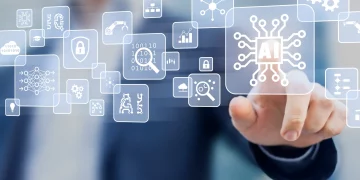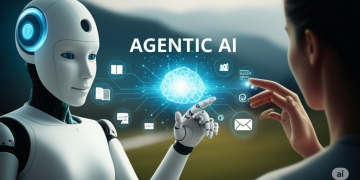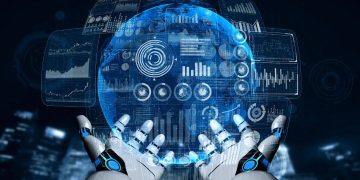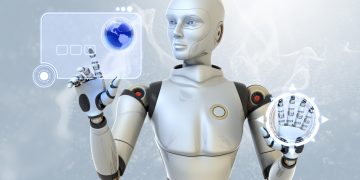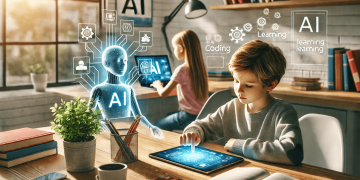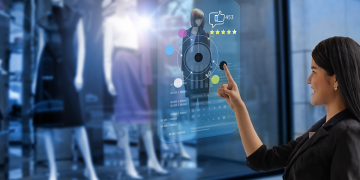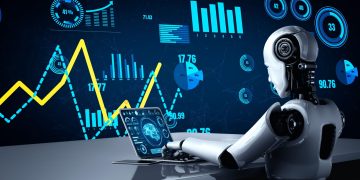As the digital world continues to expand and evolve, so do the threats that accompany it. Cybersecurity has become a critical concern for organizations, governments, and individuals alike. Traditional methods of cybersecurity are often unable to keep pace with the growing sophistication and scale of cyber threats. To address these challenges, Artificial Intelligence (AI) is increasingly being utilized to detect, mitigate, and respond to cyber threats more effectively. This article explores the various ways in which AI is enhancing cybersecurity measures, its applications in threat detection and mitigation, and the future of AI-powered security systems.
1. The Growing Importance of AI in Cybersecurity
Cyber threats are becoming more complex and frequent, with hackers utilizing advanced techniques, such as malware, ransomware, phishing, and denial-of-service (DoS) attacks. These threats are not only more difficult to detect but also increasingly difficult to prevent. Traditional cybersecurity approaches, such as signature-based detection systems and manual interventions, have limitations when it comes to identifying new, unknown, or evolving threats.
AI, particularly machine learning (ML) and deep learning (DL), has shown significant promise in addressing these challenges. By leveraging the ability of AI systems to analyze large volumes of data in real-time, organizations can identify patterns, detect anomalies, and respond to cyber threats more quickly and accurately than ever before.
2. AI-Powered Threat Detection and Anomaly Identification
One of the key strengths of AI in cybersecurity is its ability to detect anomalies and suspicious patterns within vast amounts of network and user data. Traditional security systems often rely on predefined signatures to identify threats, which means they are ineffective at detecting new or novel threats that do not match known patterns. AI-powered systems, on the other hand, can detect irregular behavior by analyzing data from a variety of sources, including network traffic, system logs, and user activity.
a) Machine Learning for Threat Detection
Machine learning algorithms are trained on large datasets of known cyber threats, learning to recognize the characteristics of malicious activities. Over time, these algorithms become more adept at distinguishing between normal and abnormal behavior, allowing them to identify previously unknown threats.
For example, machine learning models can detect unusual patterns of network traffic, such as a sudden spike in data transmissions or unexpected requests to access sensitive files. By continuously learning from new data, AI-based systems can improve their ability to recognize and respond to emerging threats.
b) Behavioral Analytics
AI systems also rely on behavioral analytics to identify unusual activities that may signal a cyberattack. Rather than relying solely on static rules, AI systems can establish a baseline of normal user and system behavior. Once a baseline is established, any deviation from this pattern—such as an employee accessing files they normally wouldn’t or an increase in login attempts—can trigger an alert.
Behavioral analytics powered by AI enables security teams to detect insider threats, account takeovers, and other forms of cyberattacks that might otherwise go unnoticed by traditional systems. This dynamic, context-aware approach is more adaptable to the constantly changing threat landscape.
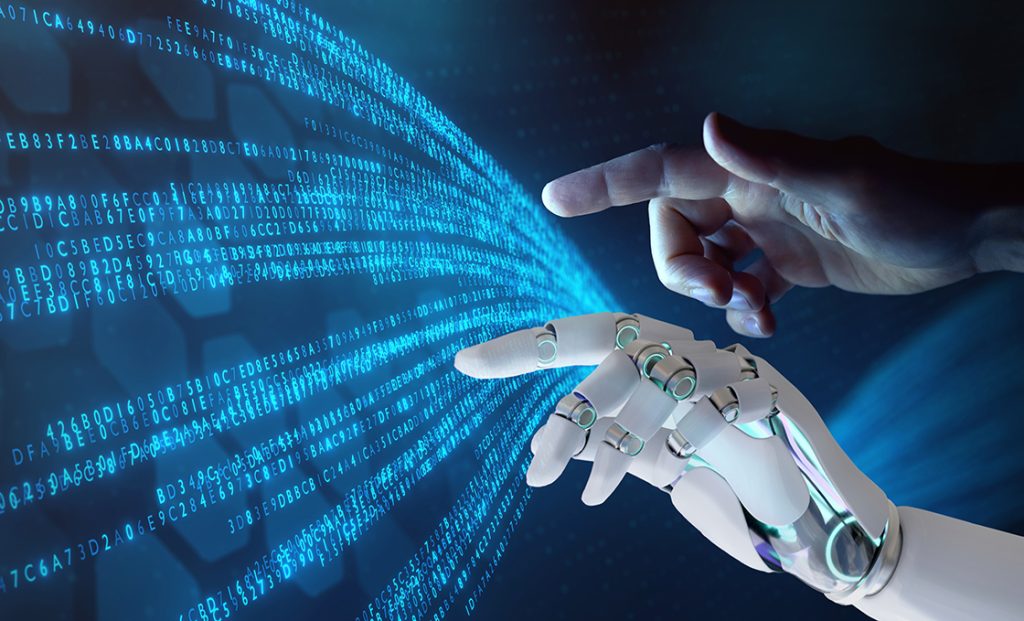
3. AI in Malware and Ransomware Detection
Malware and ransomware attacks are among the most prevalent and damaging cyber threats. Traditional antivirus software relies on signature-based detection to identify known malware, but this approach is often ineffective against new, polymorphic, or zero-day threats—malware that changes or disguises itself to avoid detection.
AI is revolutionizing malware and ransomware detection by utilizing advanced techniques to identify suspicious files, behaviors, and communication patterns that may indicate the presence of malicious software.
a) AI-Based Static and Dynamic Analysis
AI-powered systems can perform both static and dynamic analysis of files and software code. Static analysis involves examining a file’s structure and code without executing it, while dynamic analysis monitors the behavior of a file once it is executed. By combining both techniques, AI can uncover hidden threats that might evade traditional detection methods.
For example, machine learning algorithms can analyze the code of a program and identify patterns that are commonly associated with malicious behavior. Additionally, dynamic analysis can monitor how the program behaves in real-time, detecting any abnormal interactions with the system, such as encrypting files in the case of ransomware.
b) Ransomware Behavior Detection
Ransomware attacks, in which attackers encrypt victims’ files and demand payment for the decryption key, have become a significant concern for organizations worldwide. AI plays a key role in detecting ransomware by monitoring system behavior for signs of file encryption, unusual network activity, or suspicious communications with external servers.
AI-powered systems can quickly identify ransomware attacks and respond by isolating infected systems, preventing the spread of the malware and reducing the damage caused. Machine learning models can also learn from historical attack data to identify new strains of ransomware that may not be detectable through traditional methods.
4. Automated Response and Incident Management
Another way AI is enhancing cybersecurity is through automated response and incident management. Cyberattacks often occur at a rapid pace, and traditional response methods—such as manual intervention and investigation—are too slow to effectively address threats in real-time. AI-powered systems can automate much of the detection, analysis, and response process, ensuring that security teams can focus on more complex tasks while the AI system handles routine or low-level threats.
a) AI-Driven Incident Response
Once a threat is detected, AI systems can initiate an automated response based on predefined rules and protocols. For example, AI can automatically block malicious IP addresses, shut down affected servers, or quarantine infected files, all in real-time. These automated responses help mitigate the impact of attacks and prevent further damage.
AI can also prioritize incidents based on severity, ensuring that security teams address the most critical threats first. By continuously learning from past incidents, AI systems can improve their response capabilities and become more efficient at handling future threats.
b) Threat Hunting and Investigation Automation
Threat hunting involves actively searching for indicators of compromise (IoCs) within a network. While this is a time-consuming task for cybersecurity professionals, AI can assist in the process by analyzing large datasets and identifying potential threats based on historical attack patterns. AI systems can automate much of the investigative process, flagging suspicious activities and helping security analysts focus their efforts on the most high-risk areas.
Machine learning models can also be used to predict potential future attacks based on historical attack data. By identifying trends and patterns in previous incidents, AI can offer proactive recommendations to help organizations strengthen their security posture and prevent attacks before they occur.
5. AI-Powered Phishing Detection and Prevention
Phishing attacks are one of the most common methods used by cybercriminals to steal sensitive information, such as login credentials, credit card numbers, or personal data. These attacks often rely on social engineering tactics, where the attacker impersonates a trusted entity to deceive victims into clicking malicious links or opening infected attachments.
AI is increasingly being used to detect and prevent phishing attacks by analyzing email content, website URLs, and user interactions for signs of fraudulent activity. Machine learning models can detect subtle clues in phishing emails, such as unnatural language patterns or suspicious links, and alert users or block the email from being delivered altogether.
a) Natural Language Processing (NLP) for Phishing Detection
Natural Language Processing (NLP), a branch of AI that focuses on understanding human language, is used to analyze the content of emails and other messages. By training NLP models to recognize common characteristics of phishing attempts—such as grammatical errors, urgency tactics, and requests for sensitive information—AI can effectively identify phishing emails before they reach the inbox.
b) URL and Link Analysis
AI-powered systems can also analyze URLs and links in emails, looking for signs of suspicious activity. For example, AI can detect look-alike domains that closely resemble legitimate websites but are designed to trick users into entering their credentials. Machine learning algorithms can flag these URLs in real-time, preventing users from inadvertently visiting malicious sites.
6. The Future of AI in Cybersecurity
The role of AI in cybersecurity is still in its early stages, but its potential to transform the field is immense. As AI algorithms continue to evolve, cybersecurity systems will become more proactive, adaptive, and efficient in identifying and responding to cyber threats.
Future advancements may include:
- AI-Driven Threat Intelligence: AI systems could aggregate and analyze threat intelligence from multiple sources in real-time, enabling organizations to stay ahead of emerging threats and attack vectors.
- Collaborative AI Networks: AI systems across different organizations may collaborate, sharing threat data and responding to global cyber threats collectively.
- Explainable AI: As AI becomes more integrated into cybersecurity, ensuring transparency and accountability in decision-making will be crucial. The development of explainable AI models will help security teams understand how AI systems arrive at decisions and improve trust in AI-driven responses.
7. Conclusion
AI is transforming the cybersecurity landscape by enabling faster, more accurate detection of threats, automating responses, and improving overall security effectiveness. With the increasing sophistication of cyberattacks, AI-powered cybersecurity measures are becoming essential for safeguarding sensitive data, networks, and systems. As AI technologies continue to evolve, the future of cybersecurity will be more proactive, adaptive, and resilient, allowing organizations to stay one step ahead of cybercriminals and protect their digital assets more effectively.





